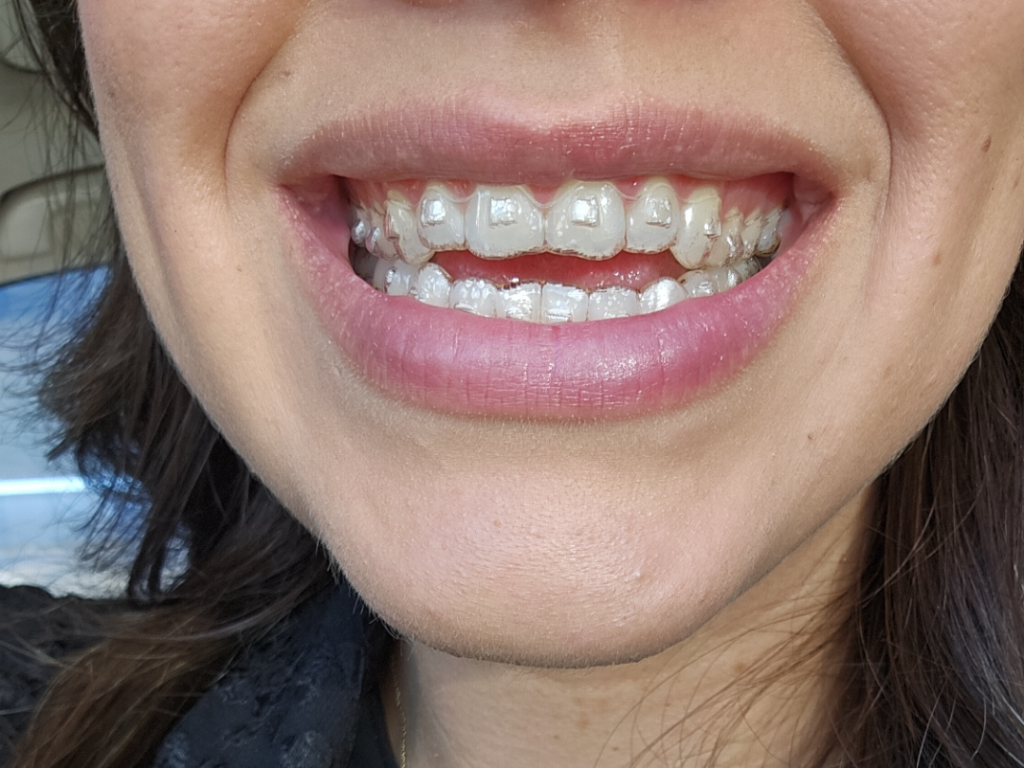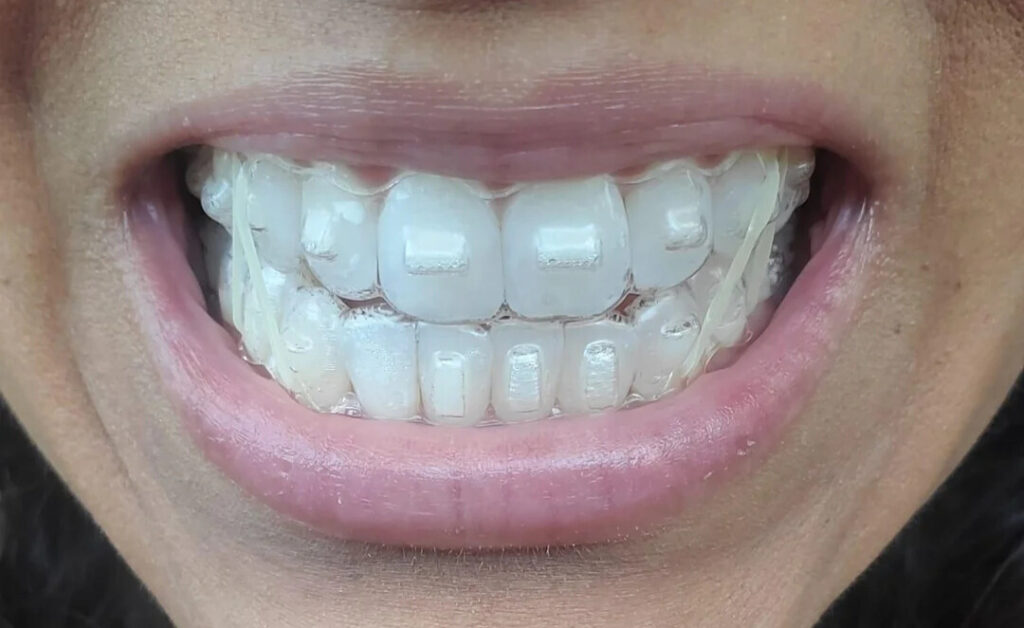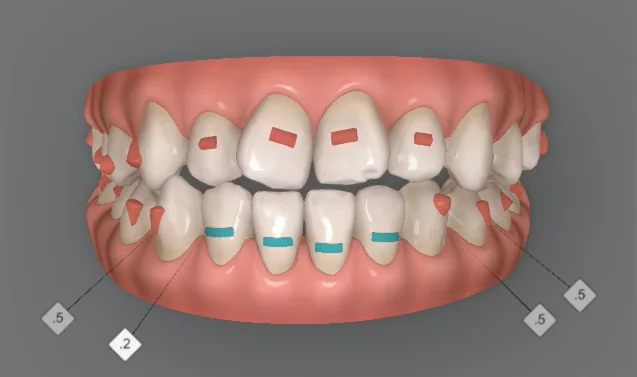What Are Invisalign Attachments? When Are They Necessary?

What Are Invisalign Attachments?
Invisalign attachments are small, tooth-colored bumps made of a material called dental composite. They’re bonded to specific teeth to help aligners apply more focused pressure. This improves control over movements like rotation, extrusion, and root torque.
They don’t move the teeth by themselves—attachments work with the invisalign aligners to guide your teeth into place. Essentially, they improve the speed and effectiveness of your treatment. The dentist or orthodontist in charge of your Invisalign may put attachments on your teeth to help improve your progress.
Attachments vs. Buttons
Attachments are shaped like tiny domes or rectangles and are placed on the surface of teeth. They blend in with your natural tooth color and are used to improve aligner grip during the treatment process.
Buttons, on the other hand, are small anchors—often metal or clear—that hold rubber bands. These are usually placed on back teeth and are used for bite correction.

Why Attachments Are Used
While clear aligners are effective for many types of tooth movement, some cases require extra help. That’s where Invisalign attachments come in. They act as anchors, allowing the aligners to apply force more precisely and predictably.
Without attachments, aligners may struggle with more complex movements. Smooth plastic trays can’t always grip certain tooth shapes or angles. This limits their ability to rotate or lift teeth effectively.
Who Needs Invisalign Attachments?
Patients with the following issues often need attachments:
- Moderate to severe crowding
- Deep bites or open bites
- Angled teeth that resist pressure from aligners alone
Attachments make these treatments more accurate and efficient.
How Invisalign Attachments Work
Invisalign attachments are placed on the teeth using a simple and painless process. They work by giving your clear aligners something to grip in order to deliver more precise and controlled tooth movements.
It’s similar to a wide receiver using gloves to help them catch the football or a baseball player using gloves to hold on to the bat- your tooth enamel is very smooth, and sometimes your Invisalign trays need more grip to be able to move your teeth the right way.

The process to place attachments includes:
- Cleaning the surface of the teeth
- Using a custom template tray to mark placement
- Applying dental composite material into the tray
- Curing the material with a special light to harden it
Once bonded, attachments give aligners something to grip. This grip allows aligners to apply targeted pressure in specific directions. Movements like rotation, extrusion, and root control are easier to achieve with this added contact.
Attachments stay on during your whole treatment and are polished off at the end.
Do All Patients Need Attachments?
Not every Invisalign patient will need attachments. Whether or not your orthodontist recommends them for you depends on your individual treatment plan and the type of tooth movements required to change your smile.
Attachments are only added when they improve grip, control, and overall treatment outcomes.
Can I Decline Invisalign Attachments?
You can decline them, but doing so may:
- Limit your treatment options
- Prolong the overall timeline
- Result in less predictable results
For best outcomes, follow your Invisalign provider’s recommendations.
Frequently Asked Questions
Are Invisalign attachments permanent?
No. Attachments are temporary and removed at the end of treatment. Your orthodontist will polish them off without damaging the tooth enamel.
Do attachments make Invisalign less invisible?
Slightly. Attachments are tooth-colored, but they can be seen up close, especially in bright lighting. Even with attachments, Invisalign is still more discreet than metal braces.
Can I eat with attachments on my teeth?
Yes, but you should remove your aligners before eating. Avoid sticky or hard foods (like chewing gum or biting into an apple) that could dislodge the attachments.
Will attachments damage my teeth?
No. When applied and removed properly by an orthodontist, they do not harm the tooth surface. They’re bonded using dental composite, which is safe and commonly used in dentistry.
How are attachments placed?
A custom template tray is used to place composite on specific teeth. A curing light then hardens the material so that the attachment stays on your tooth.
Can I refuse attachments?
Yes, but doing so may reduce the effectiveness of treatment and increase your total treatment time. If you want the best smile outcome, follow your Invisalign provider’s recommendations.
Are buttons the same as attachments?
No. Buttons are used to anchor elastics and assist in bite correction. Attachments help aligners move teeth more precisely.